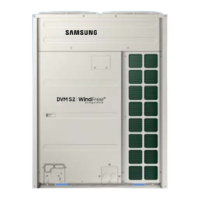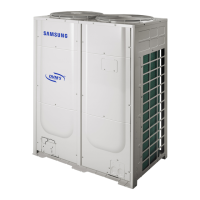What does error E151 mean on a Samsung AM071NN1DEH/TK Air Conditioner?
- TTammy Potter DDSSep 2, 2025
Error E151 on your Samsung Air Conditioner indicates an error due to an opened EEV (2nd detection).

What does error E151 mean on a Samsung AM071NN1DEH/TK Air Conditioner?
Error E151 on your Samsung Air Conditioner indicates an error due to an opened EEV (2nd detection).
What does error E306 mean on a Samsung AM071NN1DEH/TK Air Conditioner?
Error E306 on your Samsung Air Conditioner indicates that the low-pressure sensor is detached.
What does error E108 mean on a Samsung AM071NN1DEH/TK Air Conditioner?
Error E108 on your Samsung Air Conditioner indicates an error due to a repeated communication address.
What does error E410 mean on a Samsung AM071NN1DEH/TK Air Conditioner?
Error E410 on your Samsung Air Conditioner indicates that the compressor is down due to low-pressure sensor prevention control_1.
What does error E413 mean on a Samsung Air Conditioner?
Error E413 on your Samsung Air Conditioner indicates an issue with the outdoor sump down_1 prevention control.
What does error E163 mean on a Samsung AM071NN1DEH/TK?
Error E163 on your Samsung Air Conditioner indicates an EEPROM option error.
What does error E221 mean on a Samsung Air Conditioner?
Error E221 on your Samsung Air Conditioner indicates an error on the outdoor temperature sensor, meaning it may be shorted or open.
What does error code E123 mean on a Samsung Air Conditioner?
Error code E123 on your Samsung Air Conditioner indicates an error on the Eva-out sensor, which may be shorted or open.
What does error code E122 mean on a Samsung AM071NN1DEH/TK Air Conditioner?
Error code E122 on your Samsung Air Conditioner indicates an error on the Eva-in sensor, which may be shorted or open.
What does error E202 mean on my Samsung Air Conditioner?
Error E202 on your Samsung Air Conditioner indicates a 3-minute tracking error on the outdoor unit.
| Cooling Capacity | 7.1 kW |
|---|---|
| Heating Capacity | 8.0 kW |
| Power Supply | 220-240V, 50Hz |
| Refrigerant | R410A |
| Air Flow Rate | 1200 m³/h |
| Outdoor Unit Dimensions (WxHxD) | 880 x 638 x 310 mm |
| Type | Split System Air Conditioner |
| Energy Efficiency Ratio (EER) | 3.21 W/W |
| Operating Temperature (Cooling) | 16 ~ 46°C |
| Operating Temperature (Heating) | -15 ~ 24°C |
| EER | 10.7 |
Handling PCB power terminals and placement considerations to prevent static electricity damage.
Safety guidelines including handling power plugs, wires, and prohibiting multiple outlets to prevent shock or fire.
Environmental and safety cautions for handling refrigerant, including frostbite risks and suffocation hazards.
Safety measures for welding, including removing flammable objects and purging pipes with nitrogen gas.
Detailed specifications for various indoor unit types, including power, performance, dimensions, and accessories.
Step-by-step procedures for disassembling and reassembling various indoor unit types, including cassette and duct models.
Description of the check-up window display and its functions, including error codes and indicators.
Comprehensive troubleshooting guide covering various error codes and diagnostic procedures.
Instructions for setting indoor unit options and addresses using the remote controller.
Method for inputting PCB option codes via the remote controller for indoor unit installation settings.
Detailed table of available SEG options and their corresponding settings for indoor unit configuration.
A guide on preliminary checks and common issues to diagnose before proceeding with detailed troubleshooting.
Troubleshooting steps for common indoor unit sensor errors like Open/Short for Room, EVAP IN/OUT sensors.
Troubleshooting guidance for Electronic Expansion Valve (EEV) opening and closing malfunctions.
Troubleshooting steps for indoor unit fan motor operational errors, including starting and lock issues.
Troubleshooting common communication errors between indoor and outdoor units, and MCU units.
Troubleshooting guide for MCU branch part setup errors, including consecutive connections and address overlaps.
Troubleshooting steps for outdoor unit sensor errors, including temperature and pressure sensor issues.
Troubleshooting for compressor-related errors such as down due to high/low pressure or overheat.
PCB diagrams and parts lists for various indoor unit types, including cassette, duct, and wall-mounted models.
Wiring diagrams for various indoor unit types, including cassette, duct, console, and wall-mounted models.












